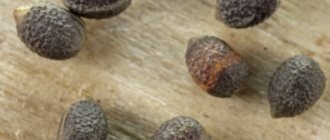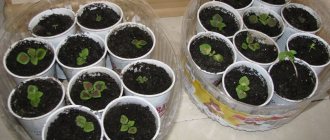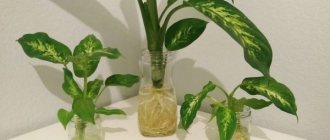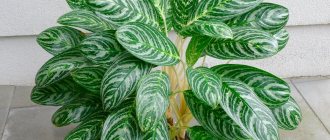The tropical coleus plant is grown all over the world for its fabulously beautiful colorful leaves. Their color is striking in its exoticism and amazing combinations of intense green, turquoise shades with rich fuchsia, violet, purple, creamy white and even black. The plant does not require much attention, grows quickly, is resistant to pests and errors during cultivation, is easily restored and pleases with a variety of varieties. In this article we will tell you how to grow coleus - planting and care in the open ground and at home.
Home care
Caring for Coleus at home is simple and does not require much effort.
Actions after purchase
When buying coleus in a store, you need to follow a few simple rules:
- It is better to do this in early spring
- Buy a plant not with a single sprouted leaf, but with a good crown;
- Do not buy a plant in bloom;
- Carefully inspect it for diseases and pests.
After purchase, you can leave it in the same pot, unless it is too small (there are no roots sticking out of the drainage hole) and if it is not an imported specimen. They usually use transport soil, which is not suitable for further cultivation.
Lighting
Most Coleus are light-loving, but direct sunlight can burn their delicate leaves. The most suitable would be the southwest or southeast side of the apartment. In hot midday hours it is better to shade it.
To ensure that the crown and color of the leaves are uniform, from time to time you need to turn the pot towards the light in different directions.
In winter it needs good light, otherwise it will become very stretched and the leaves will fade.
Important! Plants with lighter colored leaves tolerate bright light better than dark varieties.
Temperature
During active growth, the flower needs a temperature of at least 20 degrees. It will not disappear even at 12, but in winter, when it is at rest.
Watering
Coleus reacts very painfully to a lack of moisture, begins to droop its leaves and can even shed them when it dries out. In summer, when the plant is actively growing, it should be watered as soon as the top layer of soil dries. In winter, watering is done no more than 1-2 times a week.
Air humidity
High air humidity is a prerequisite for good plant development. It requires frequent spraying - up to 2 times a day in summer. You can place the pot with it in a tray with wet pebbles or place a container with it next to the flower.
The soil
Any fertile soil will suit coleus, as long as it is well-drained and loose. Usually a mixture of leaf, turf and peat soil with sand is used.
Top dressing
To maintain the beauty and decorativeness of the leaves, the flower needs to be fed, especially in spring and summer.
Mineral fertilizers containing potassium are good to combine with organic matter.
Nitrogen is a mandatory element of fertilizing, as it is responsible for the brightness of the color of the leaves.
Coleus needs to be fed once a week when it is growing and once a month in the fall and winter.
Important! In winter, the concentration of fertilizer should be half as much.
Planting in houses and gardens
Planting can be done either by seeds or cuttings. It is produced in early spring. The seeds germinate quickly, and after just a few months the plant delights with its luxurious leaves.
Because of its heat-loving nature, coleus does not tolerate too low temperatures, so it should be planted in the garden only after hardening and in already warmed soil. The landing site should be windless and slightly protected from direct sun by an openwork shade.
Transfer
If coleus is grown as a perennial plant, then it needs replanting once every 2 years. It is done when the plant becomes crowded. You need to take a larger pot, prepare a fresh substrate and simply transfer the plant into it
Trimming
Flowering greatly weakens the plant. Peduncles should be trimmed as soon as they appear. Long shoots are also removed. In order for the plant to bush well, its tops are pinched. Spring cardinal pruning of the flower is also important.
Growing from seeds
Coleus reproduces well by seeds.
Small seeds are scattered on a layer of soil and sprinkled with sand on top.
The soil should be moist.
The first shoots appear after 15-20 days and are planted in a container at a distance of 2 cm from each other.
When 1-2 pairs of leaves appear, the sprouts are planted in small pots 7 cm in diameter.
After another month, they are transferred to larger pots (9-11 cm).
Next, care for them as for an adult plant.
Important! The decorative effect of new plants appears 5-6 months after planting the seeds.
Reproduction
In addition to seeds, coleus is propagated by cuttings. They can be taken when pruning the plant at the end of February. Cuttings with the lower leaves removed are immersed in water. When roots appear, they are planted in a prepared substrate in small pots. Temperature is about 18 degrees. This indoor flower is characterized by rapid growth, so after 2-3 months a good crown with large leaves grows.
Seed method of growing coleus
Purchasing seed material will not cause difficulties - the stores offer a large selection of varieties for every taste. You can start sowing coleus seeds for seedlings in the middle or end of March, having taken care of the containers in advance: plastic cups with drainage holes, small cassettes, peat cups. Peat tablets are also a great option.
Information! Seeds from Holland and England have better germination.
You can use purchased soil or prepare it yourself by mixing black soil, crushed pine needles, cow manure, and river sand in a ratio of 4:2:2:1. Sand and black soil should be sifted and heated in the oven.
There is no need to bury the seeds in the soil - they are scattered over the surface, lightly pressed with a spoon, sprinkled with sand and moistened with a spray bottle. The container is covered with a transparent material (glass, film) and placed in a warm (20°-24°C) place. After germination, the cover must be removed. When the seedlings become stronger, move them to a cooler place with a temperature of 16°-19°C and good lighting, but avoid direct sunlight to avoid burns.
Picking into cassettes for root development is carried out when 2 true leaves appear. You can transplant into individual containers, for example, 0.5 liter cups, with 3-4 leaves, pinching the top.
Planting coleus seedlings in open ground in a previously prepared place is carried out when the soil warms up.
Reference! If it is not possible or you do not have time to sow seedlings, you can sow them directly in a flower bed, in a flower garden, and sow seeds of other flower crops nearby.
Coleus at home
Despite the possibility of growing the crop in open ground, it is more often used as a houseplant. This is due to the fact that at home it is much easier to provide the optimal lighting, temperature and humidity conditions necessary for the full development of the crop.
Let's take a closer look at the main methods that can be used to propagate this ornamental plant at home.
Growing from seeds
Sowing seeds at home is no different from the procedure carried out in open ground. The purchased seeds are sown in containers with light nutrient soil, sprinkled with a small amount of sand, lightly watered and covered with glass. After this, the container is transferred to a cool room for 7-10 days, and when the first shoots appear, the plants are planted in separate pots.
Once the plant has formed several true leaves and a strong root system, they can be transplanted into permanent pots.
Growing from cuttings
The cutting method is an even simpler way to obtain high-quality planting material. But for this you need at least one adult plant. During the pruning process, you will in any case be left with pieces of shoots that can be used to grow new crops (Figure 3).
Coleus propagation by cuttings is carried out as follows:
- The shoot is shortened so that its length does not exceed 10 cm.
- The lower part is freed from leaves and immersed in moist, light soil.
- Each cutting is covered with film or a plastic bottle, transferred to a warm room and kept at a temperature of about 20 degrees.
Figure 3. Growing an adult plant from a cutting
The rooting process takes no more than 10 days, after which the sprouts can be carefully removed from the soil and transplanted into permanent pots.
Home care
Like planting, caring for the plant does not cause significant difficulties. The main thing is to water the plant on time, using settled soft water. In addition, when grown at home, it requires mineral supplements, especially in spring and summer. They are applied to the soil weekly, but in winter the frequency can be reduced to once a week (Figure 4).
Figure 4. Features of care at home and in the open ground
Since coleus is a tropical plant, it is necessary to maintain optimal air humidity for it. In the summer, periodic spraying of the leaves will successfully cope with this task, and in the winter it is enough to place flower pots in trays with moistened expanded clay. Removing buds is also a mandatory condition for caring for the crop. Without this, plants will spend their vital energy on flowering, and not on forming lush bushes. In addition, during the period of vegetative dormancy, it is necessary to carry out rejuvenating pruning, shortening the shoots by 5-7 cm to stimulate branching.
Coleus diseases
The main diseases are associated with improper care or placement of the plant. For example, if pruning is not done in a timely manner, the shoots of a bush become very elongated, become thin and brittle. The same process occurs if the plant does not have enough light. Conversely, under very intense lighting, bright and colorful leaves turn pale, and when excess moisture accumulates at the roots, they fall off.
Common pests that are dangerous to the plant include spider mites, whiteflies and aphids. To combat ticks, both in open ground and at home, acaricides are used. A regular soap solution used to treat the leaves and stems will help eliminate aphids on coleus in a pot, while in open ground insecticides are used for this purpose, as well as to combat whiteflies.
Coleus transplant
Coleus transplant
Coleus is usually replanted in the spring. During replanting, you don’t have to think too much about the type of soil, since coleus feels great both in turf or leaf soil, as well as in garden soil. If the transplant is carried out in a pot and not in a flowerbed, you need to select a larger one by 3-5 cm.
Plant the plant deeply - this allows the crop to grow additional roots and develop its root system. When replanting, the stems and roots are trimmed a little to speed up the establishment in the new location. It is very important to sprinkle the cut areas with crushed charcoal.
Coleus propagation
Coleus are propagated by seeds and, mainly, cuttings, in order to avoid splitting and loss of decorativeness of the leaves.
Coleus seeds are small (3500 pieces in 1 g), they are sown in February-March-April in bowls and sprinkled with sand on top. Keep at a temperature of 20-22°C. Shoots appear on the 14-18th day. Seedlings are planted in bowls or boxes at a distance of 2x2 cm. The composition of the soil is as follows: leaf - 1 part, peat - 1 part, turf - 1 part, sand - 1 part.
In the phase of 1-2 pairs of leaves, coleus are planted in 7-centimeter pots, 1 copy each. The composition of the earth is the same. After a month, they are transferred into 9-11 cm pots. The main care of plants consists of watering and keeping them in a lighted place, since the intensity of the color of the leaves largely depends on the lighting (sun rays). Young plants are pinched for branching purposes. After 5-6 months, plants become important for decorating rooms.
Propagating Coleus Guy Grigsby and Amy Fieling
Plant cuttings begin in February, but this can be done until May. Coleus cuttings are planted in distribution boxes or directly on a rack in the sand. Rooting occurs within 8-12 days. Rooted cuttings are planted in 9-centimeter pots. The composition of the soil is the same as for picking. In order to obtain branched plants, pinch the tops of the shoots.
When caring for plants, watering, ventilation, a temperature of 16-18°C, a bright, possibly moderately sunny location are provided (with significant solar insolation, curling of the edges of the plate and discoloration of the leaf color are observed at high temperatures at night and low during the day). Coleus are characterized by intensive growth - within 3 months they are branched plants with large leaves. Then they are transferred into 11-centimeter pots.
Features of Coleus
Coleus are perennial and annual herbs or shrubs. The peculiarity of the plant is its ribbed stems with four edges and wide-oval leaves with denticles along the edge and ornaments of different colors. The color of the leaf plate and ornament is different for each species and may vary depending on the lighting. The combination of colors is quite unusual and gives the plant a bright, unusual color. Because of its leaf shape, which is similar to that of a nettle, coleus is colloquially called "nettle."
By planting coleus of different colors and with different leaf sizes, the plantings are given an original bright look - the quickly growing bushes will not leave anyone indifferent.
Coleus: planting and care at home
To grow indoors, the plant is planted when it reaches a height of 15 cm, regardless of the propagation method. Suitable planting time is late March - early April. And by summer the room will be decorated with a full-fledged flower.
Coleus at home requires minimal attention
High-quality drainage is placed at the bottom of the pot, since the flower loves watering, but does not tolerate stagnant liquid.
The flower has characteristics and care requirements. They are taken into account when growing flowers indoors.
Temperature
Temperatures are important for successful growth and flowering. Winter temperature is required to be at least 12 °C. The rest of the time, the thermometer readings are within 15-25 °C. The temperature should be stable and without sudden changes. Lower rates slow down the development of the plant and destroy its elegant shape.
Lighting
The indoor coleus flower prefers bright, diffused light. Direct rays destroy it: the bushes stop growing, the leaves turn yellow, and they get burned. To prevent this situation, windows facing east or west are selected.
Note! By placing the coleus on a south window, the flower is shaded during the day. Northern windows are illuminated with fluorescent lamps
Watering
In winter, water as the soil dries out. At other times, the soil is kept moist. Water for irrigation is settled and slightly heated. Leaves should remain dry when watering.
From time to time the water is acidified. Use lemon juice (3–5 drops per 1 liter of liquid) or acid (0.2 g per 1 liter). The procedure will enhance the brightness of the foliage. Hydrogen peroxide (20 ml per 1 liter of water) is also suitable.
For your information! Flower growers recommend watering a flower growing in open ground or indoors with nettle infusion.
Humidity
To maintain humidity in the room, place a container with moistened sand or expanded clay next to the pot. And the pot itself is placed in a tray containing wet pebbles.
Growing coleus at home is a fun activity, especially for a beginner.
Priming
The soil chosen is loose and fertile with a neutral or slightly acidic reaction. You can buy a soil mixture for flowers growing in the house, or you can prepare the soil yourself. There are two cooking methods:
- mix leaf soil (or turf), humus, peat, sand in a ratio of 4:3:1:1;
- mix leaf and turf soil, sand and peat in equal volumes.
Important! Moss, brick chips, coconut substrate, and coal powder are added to each mixture.
Feeding
From the first days of March until the end of summer, fertilizing is applied weekly. Complex mineral compositions for home flowers are used. In autumn, watering and fertilizing are carried out less frequently, and in winter the flower is fed once every 30 days, and the amount of substance is halved.
Features of winter care
Winter is the most difficult time that indoor coleus experiences. Due to lack of sunlight, the flower loses its picturesque appearance. The shoots stretch out, the leaves become dull, the lower ones dry out and fall off. Florists who do not want to care for such a plant simply dispose of it and re-grow it from seeds in the spring.
Those who do not want to part with the flower carry out the activities described below.
- Urgently place the pot in the sunniest place in the house, rarely water it to prevent the activation of stem growth.
- To prevent the plant from dying from low temperatures, the pot is placed on a thermal insulation pad (for example, polystyrene foam).
- Water is not left in the tray of the pot, and after watering it is immediately poured out.
- The watering schedule is being revised depending on the temperature in the apartment. If it is hot, the plant is watered once a week and once a month with the addition of mineral fertilizers.
- If necessary, maintain the room temperature at 15–18 °C. The plant will stop growing upward. But in this case, watering is carried out once every 3-4 weeks, and fertilizers are not applied at all.
- Fresh air has a positive effect on the plant, but not a draft.
Winter is a difficult time for coleus
During the winter season, the coleus indoor plant weakens and loses its appearance. Putting the flower in order begins with pruning. And only the Black Dragon variety, which has a compact crown, can be saved from these actions.
Coleus pruning
In spring, shoots with faded foliage stretching upward are cut off. Stumps 10 cm high are left, where new buds soon appear, then new shoots. After this, the coleus will fluff up the foliage and return the original chic.
You can’t limit yourself to spring pruning. It is carried out regularly to:
- inhibit flower growth;
- activate the growth of shoots after pinching;
- create a beautiful shape;
- recreate decorative effect after winter;
- get cuttings.
Note! For cuttings, choose old shoots located a few centimeters from the top
Pruning and proper formation of coleus
Coleus internode
It must be borne in mind that pruning and pinching of coleus plants for a beautiful and correct formation of the bush is recommended to begin immediately, at an early stage of development (growth), as soon as the plant reaches three internodes in its growth. As a rule, young plants easily respond to such pruning, unlike adults. In the future, as the coleus grows and develops, it is necessary to regularly pinch its tops and trim off the shoots growing inwards.
Complete pruning of domestic perennial coleus growing in the house, for its rejuvenation, should be done in February or March to the height of one stem space (internodes) from the ground, however, the plant can also be transplanted along with the soil into a larger pot, but As coleus experts note, it should not be kept for more than three years, even taking into account complete pruning and replanting, but cutting cuttings from the mother plant and then growing them to replace them is what is called the very thing.
Problems, diseases, pests
Coleus suffer from aphids, spider mites, scale insects and whiteflies. Homemade coleus is more vulnerable than outdoor coleus. To prevent damage by parasites, you need to inspect the flower more often and wash it in the shower.
Insects are found on the underside of leaves. A signal that coleus may be infected is discoloration and deformation of the leaves. For treatment, you need to cut out the affected parts of the flower and treat the plant with an insecticide.
The main growing problems and diseases are associated with defects in care:
- rotting of the lower part of the stem: stagnation of moisture due to lack of drainage;
- the ends of the leaves become brown: dry air, little watering;
- coleus leaves fall: low temperature, drafts;
- light spots are visible on the leaves: direct exposure to the sun;
- leaves lose brightness: lack of lighting;
- coleus growth slows down: soil is too poor.
Planting care
For coleus, the soil must be kept moist, not allowing it to dry out, but it should not be flooded, otherwise the roots will begin to rot, i.e. Watering should be done moderately and often.
To add splendor and brightness in the summer, the bushes need to be fed with fertilizers for ornamental crops once every 10 days. An important point is that there should be a minimum amount of nitrogen in fertilizers, as it affects the color saturation. When growing in an apartment, fertilizing with mineral fertilizers in winter is carried out only in case of insufficient lighting.
Trimming
A bush in the shape of a fluffy ball will be obtained if you remove the apical bud and buds on the side branches when the height of the bush is 4-5 cm and the length of the side branches is up to 5 cm. This procedure is carried out with bushes of any age. To obtain a tall, straight bush, the side branches are cut off.
The bush grows well when the inflorescences and shoot tips are removed by 1-2 cm - the plant does not waste energy on flowering. It should be noted that the crop tolerates pruning well and it is possible to form a bush of the desired size and shape throughout the entire growth period.
Features of care
You don’t have to cut off all the inflorescences and leave a few to add variety to the flower garden - spikelets of small flowers look beautiful among low-growing plantings.
Coleus quickly reacts to lighting, turning its leaves and stems following the sun, so at home the pot needs to be periodically turned around so that the crown does not form one-sidedly. In the flowerbed, the desired direction is given with the help of a peg.
If garden coleus is planted as a perennial, with the onset of cold weather the bush is brought home, choosing a well-lit place, and cared for as a houseplant. If there is insufficient lighting, provide additional lighting. In the spring, in March, it is imperative to perform rejuvenation to activate the growth of young shoots - cut off old leaves and tops of branches. With the onset of warmth, the flowers are again taken outside.
Advice! You shouldn’t bring old bushes home; it’s better to take cuttings from them and plant a new plant.
Coleus: home care
The plant stands out not only for the variegated color of its leaves, but also for its ease of care. Moreover, it can be grown both indoors and in the garden.
Lighting
This flower is very photophilous and needs bright light. Like all plants, it will feel truly comfortable not indoors, but outdoors. Suffocating rooms cannot compare in illumination with the street, even for varieties such as coleus.
The coleus plant has an interesting feature - its species can react differently to the sun. Species with bright colors, such as those with red, yellow, orange or white leaves, tolerate direct sunlight better than those with green leaves. At the same time, they need to be protected from an excessive amount of direct rays, especially if they grow in a room. The abundance of rays penetrating through the glass can lead not only to leaf burning and loss of turgor, but also to burns. Therefore, those who keep plants at home (for example, Coleus Blume) must take care of their shading.
Temperature
In summer, the optimal temperature for a flower is 18 - 25 °C; in winter it should not fall below 12 °C. If the temperature is too low, the coleus plant may lose its leaves and its roots begin to rot, which leads to its death. At high temperatures, the leaves become less elastic and wrinkled.
Watering
The flower is watered with warm, settled water. In spring and summer, its quantity should be sufficient, especially if the coleus is outdoors. It is very sensitive to a lack of moisture - when the soil is dry, the leaves become flabby, but at the same time it should not be flooded. At cool temperatures (14–16 °C), watering is reduced.
In winter, watering should be moderate
It is especially important at this time to avoid over-watering the soil, as this can lead to root rot, but you should also keep it slightly moist and not allow it to dry out.
It must be remembered that for all types of coleus, be it Coleus Forskolia, Coleus Black Dragon or another variety, overwatering is no less harmful than underwatering. Moreover, overwatering can be more destructive than underwatering. The reason is that waterlogged soil does not allow the roots to breathe and leads to their rotting. Root rot can very quickly destroy a flower.
Water for irrigation must be soft. It is unacceptable to water plants with unsettled tap water - it contains too many salts that damage the roots.
Water quality is very important for the well-being of the flower and is reflected in its appearance.
Before using water for irrigation, it must be left to sit for at least a day (it is best to allocate large containers for this, for example, five-liter plastic bottles). No more than 2/3 of their volume can be used for irrigation; the remaining third is discarded because it contains harmful sediment.
Water temperature also plays an important role. Cold water cannot be used because of the risk of overcooling the roots - as mentioned above, this leads to their rotting.
Humidity and spraying
All species, including Coleus Black Dragon, Coleus Forskolia, etc., require high air humidity for normal development. The optimal level of humidity for a plant is the one it can receive outside. Indoor humidity is sometimes insufficient, so care should be taken with spraying (in the warm season).
To do this, you also need to use only soft water, otherwise the salts contained in the water will leave stains on the leaves. When sprayed with hard water, the leaves gradually become covered with an indelible coating, which prevents the plant from breathing and worsens its health. It is advisable to use distilled or bottled water for these purposes. The ideal option is clean rainwater, which leaves no traces at all.
In winter, with the beginning of the heating season, indoor plants especially suffer from dry air. You can increase the humidity level by placing small containers of water next to the plant or placing it on a tray with wet pebbles or expanded clay. However, in this case, you need to make sure that water from the tray does not penetrate into the pot through the lower holes and the soil does not become waterlogged.
Types and varieties of Coleus
Also check out these articles
- Grape diseases
- Rapeseed honey
- How to distinguish false honey mushrooms from real ones, what they look like
- Why does garlic turn yellow?
In the natural environment, scientists have counted more than 60 species of coleus. But only from one of them, namely Blume, were all modern cultivated varieties bred.
- Coleus Renelta grows up to 50 cm in height. Suitable for growing as a decorative, ampelous flower. The leaves are very bright, with an abundance of veins. Color ranges from light green to red and purple tones.
- Hybrid coleus is usually grown indoors, since it needs a softer, constant microclimate without unexpected surprises such as late frosts, cold snaps, etc. An adult plant can reach a height of a meter, but more often it is a compact bush with decorative leaves. The color of the leaves depends on the lighting. In the shade it is green, and in the sun it becomes burgundy.
- Black dragon has ribbed, slightly twisted leaves. The color is dark purple along the edge of the leaf, and the inside is raspberry-pink.
- Wizard is a coleus with very interesting yellow-golden leaves. The color saturation may vary, but the tint is always golden.
- Wizard Vechernyaya Zorya has slightly twisted leaves that are convex at the edges. The color is fiery red with green edging.
- Wizard Jade is an incredibly beautiful plant variety. The leaves are white in the middle and bright green at the edges. These colors look amazing when combined, especially in a flower bed.
Methods for propagating indoor coleus
Coleus reproduces in two types:
- seeds
- cuttings
Growing from seeds
Coleus can be easily grown from seeds that can withstand temperature changes well. In cold climates, annual plants are grown from seeds. However, amateur gardeners believe that in this way, a grown plant will not be able to convey all its distinctive properties and characteristics of a particular variety. The most expensive and unique specimens of coleus grown from seeds can be transplanted into a pot for the winter, try to preserve it throughout the winter, and at the end of the season propagate by cuttings. You can buy ready-made seeds at any flower shop.
It is better to sow coleus in March, when there is already a lot of sun outside. To do this, it is recommended to place the pot with sowing on a window in a sunny place. If the decision to sow was made in late autumn or winter, it is necessary to provide an additional light source.
Coleus can be easily grown from seeds that can withstand temperature changes well.
It is better to sow nettles in a flat or oblong box or pot. The soil must be moist, and after sowing it must be covered with cling film to create a greenhouse effect. You can also use glass, which will allow sunlight and heat to pass through. The distance between the seeds should not exceed 5 cm. The germination percentage of each seed is very high, so it is necessary to foresee the fact in advance so that the grown stems are not crowded in the pot. It is not necessary to make a hole for each seed. They can be scattered evenly over the surface of the soil, and then sprinkled with water from a spray bottle and covered with film or glass.
Propagation of coleus by cuttings
If you simply don’t have time to start seeds, you can propagate coleus using cuttings. In order for the cutting to take root, it must be placed in a pot with soil and left in a warm place. For quick germination, it is recommended to cover the pot with film to create an additional effect of warmth and moisture.
Coleus can be propagated using cuttings
Propagation by cuttings
When propagating by cuttings, you need a little more effort, although the method is just as effective - the main thing is that there is an adult, healthy mother plant available. Propagation by cuttings is carried out throughout the year. But to obtain an indoor flower, the period from August to the end of September is usually used.
A healthy shoot is cut off, placed in water and wait until roots appear on it. Then the cuttings are planted in a separate pot or flowerbed. The plant takes root quite quickly, the main thing is that all conditions are created for this - watering, warmth, sunlight.
Pest and disease control measures
If watering standards are violated, the roots of the plant may become rotten and the leaves will begin to fall off. You should periodically inspect the bushes and, if there are signs of disease, take measures by treating them with special preparations.
Of the pests, coleus likes mealybugs, aphids, whiteflies, and spider mites. At the very beginning, before the pest has had time to seriously infect the plant, you can use simple home remedies; at later stages, use insecticidal agents, for example, Bison, Actofit, Confidor Extra.
Folk remedies for pest control:
- Mealybug. Treating the affected areas with alcohol (wet a cotton swab) or spraying with a daily infusion of lemon and orange peel (50g per 1 liter of boiling water) will help.
- Whitefly. Pour crushed soap (laundry, tar) with water (1:6), beat with a sponge and apply foam to the site of the colony, you can spray the entire bush and water the soil around it.
- Aphid. Spraying with a solution of laundry soap (300g per 10l) or tar (100-150g per 10l) with the addition of ash. The effect is enhanced if the product is heated for half an hour. Ash can be used to pollinate the soil near the plant.
- Spider mite. A good result is obtained by treating with a soap solution, ammonia solution (30g per 10l), daily infusion of garlic (30-50g per 10l of boiling water).
Coleus planted on a balcony in a dacha will delight you with its bright variegated colors throughout the season, and when planted in an apartment it will create a summer mood, bringing home a sunny smile and, at the same time, growing and caring for it will not bring much trouble.
Coleus varieties
There are about 150 types of crops known in the world. In regions with warm climates, this plant is a perennial, and in regions with cold winters it is an annual or houseplant.
The most common types:
- Hybrid coleus (Coleus hybridus) is a herbaceous perennial with a tall (50-80cm) erect stem. The leaves are wide, oval-heart-shaped, uniform or variegated in color. Planting and caring for hybrid varieties does not differ from the same activities with simple species.
- Coleus Blume grows up to 80cm and is most often grown in temperate regions. Large, pointed egg-shaped leaves have a varied palette of colors. Small purple flowers are collected in an inconspicuous spikelet. Among the varieties of this species there is a dwarf (15cm) with cherry-pink leaves and a yellow-green border - K.Sabre.
- Coleus Renelta is a decorative hanging species with a wide variety of colors. Used for room decoration, balcony, gazebo.
Room placement and lighting
Like most plants, coleus prefers an abundance of light, but it must be shaded from direct sunlight.
In bright sunlight, the bright leaves of coleus quickly fade, become pale, expressionless, can get burned, and the plant itself stops growing.
With a lack of lighting , the shoots stretch out, the bush loses its shape and decorativeness, and the leaves gradually turn green, losing their bright color.
The best placement is east and west windows. Illumination is required on the north side, and shading on the south side.
Mr. Summer Resident informs: Coleus in winter
Perennial varieties from the flowerbed are transplanted into a pot. Placed near southern or southwestern windows or on a balcony or loggia. Old plants are dug up, cuttings are cut and propagated. They keep coleus as a house flower and fertilize it once a month. In autumn, watering is reduced.
Temperatures in winter are +8...+15 °C. If it’s too cloudy, add phytolamps. In March, anti-aging pruning is done - shoots are shortened, old leaves are removed. When the weather warms up and the air temperature reaches + 10 °C, they are planted again on the site.
Watering
Coleus soil should always be moderately moist. In summer, water often and abundantly (while not allowing water to stagnate), in winter - less often, but without allowing the soil to dry out.
Watering is carried out only with warm, well-settled water so that moisture does not fall on the leaves.
To brighten the leaves, the water can be slightly acidified with lemon juice - 4-5 drops per glass (200 ml) of water or hydrogen peroxide - 20 ml per 1 liter of water.
Botanical description
Coleus stems are ribbed, tetrahedral, woody at the base. The leaves are pubescent, heart-shaped, opposite, jagged, sometimes small, but in some species they reach a length of 15 cm. The stems and leaves of natural plant species resemble nettles, which is why coleus is popularly nicknamed “nettle”. The color of the leaves is all possible combinations of green, burgundy, yellow, and red. Small blue or purple flowers are collected in spike-shaped inflorescences.
- Primrose: growing in the garden, types and varieties
The flowering of decorative-leaved coleus does not cause any particular interest among gardeners - there is nothing remarkable in its flowers. These types of coleus are grown for their amazing leaves, although there are also beautifully flowering species and varieties of coleus.











